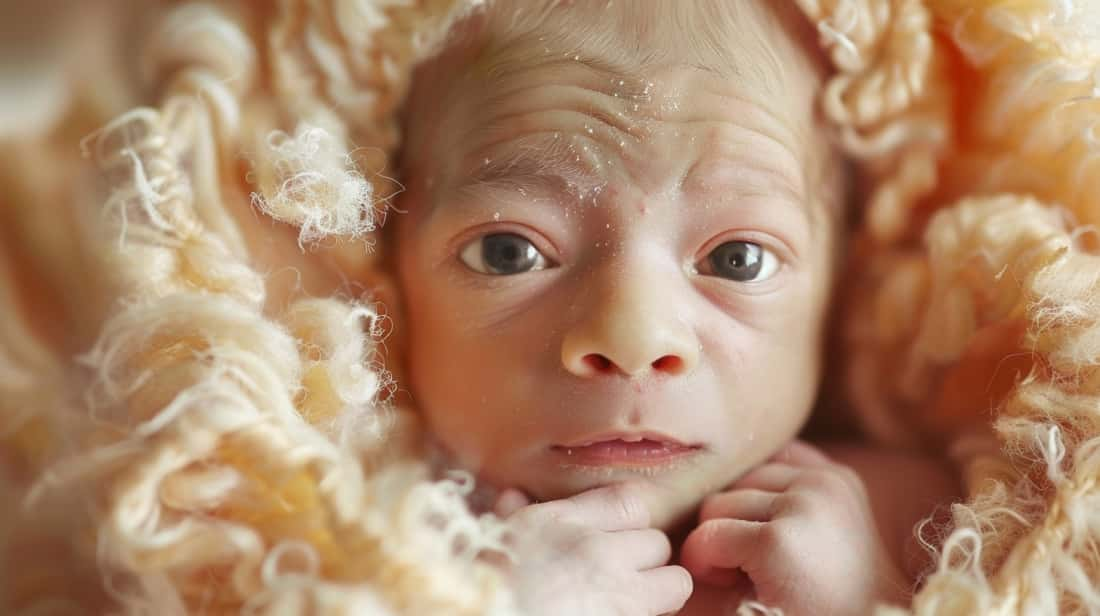Babies do not have the cognitive ability to decide if they want to be born, despite a controversial theory proposing otherwise. Infants do not have self-awareness or the capacity to make intricate decisions such as choosing to exist. Their restricted cognitive development hinders them from participating in such choices. This casts doubt on the idea that babies can make decisions about their birth. The theory suggesting that babies can opt not to be born lacks evidence-based support because of infants’ absence of self-awareness and cognitive skills. Delving deeper into this subject reveals the complexities surrounding infant consciousness and decision-making.
Key Takeaways
- Singer argues infants cannot choose existence.
- Newborns lack self-awareness for decision-making.
- Ethical dilemmas arise from infants’ lack of choice.
- Anti-natalists question consent in procreation.
- The theory challenges traditional views on birth autonomy.
Singer’s Theory on Infants’ Personhood
Peter Singer contends that newborn infants lack personhood and self-awareness, sparking controversy with his theory. Singer argues that infants don’t possess the attributes traditionally associated with personhood, such as rationality, self-awareness, or the ability to make choices.

This perspective leads Singer to suggest a waiting period before considering infants’ right to live based on their capacity for consciousness. The significance of infants’ inability to express desires or make decisions plays a vital role in shaping Singer’s views on their personhood.
Consequently, Singer’s stance supports parents in making difficult decisions regarding the prolongation of life for severely disabled infants. Rooted in his practical philosophy, Singer’s belief in the ethical permissibility of infanticide under specific circumstances is a direct result of his controversial theory on infants’ personhood.
This theory challenges traditional notions of moral and ethical considerations surrounding the lives of newborn infants.
Lack of Self-Awareness in Newborns
Newborns lack self-awareness, which means they aren’t conscious of their own existence or capable of forming preferences. This lack of self-awareness influences their ability to make choices, such as deciding whether or not they’d like to be born.

While infants may exhibit sensory awareness, their cognitive development isn’t advanced enough to comprehend complex concepts like birth. Singer’s argument about newborns’ inability to choose their existence is a significant point of contention in discussions about ethics and personhood.
Infant Consciousness Development
Infants lack self-awareness and consciousness in their early stages of development. Controversial theories, advocated by scholars like Peter Singer, suggest that newborns don’t exhibit the capacity for self-awareness. Singer’s stance leads to the argument that infants, lacking this self-awareness, don’t meet the criteria for personhood. This viewpoint has sparked ethical debates questioning the rights and status of infants.
Some contentious perspectives even propose a waiting period before granting infants the right to life. It’s important to understand that newborns’ lack of self-awareness doesn’t imply a lack of value or importance. While infants may not possess self-awareness initially, their development progresses rapidly, leading to the gradual emergence of consciousness.
Newborn Sensory Awareness
In the early stages of development, newborns lack self-awareness and the ability to choose their existence consciously. Studies indicate that newborns have limited sensory awareness, primarily focusing on fundamental needs such as feeding and comfort.
The gradual development of self-awareness in infants occurs through interactions with their surroundings and caregivers. Newborns’ cognitive capacities are constrained to instinctual responses and basic reflexes rather than intricate decision-making related to their existence.
While newborns can sense stimuli and react to sensations, they lack the cognitive capacity to make deliberate choices about their birth or non-birth. This lack of self-awareness in newborns underscores their vulnerability and dependence on caregivers for survival and development.

Understanding the limitations of newborn sensory awareness can help caregivers provide appropriate support and nurturing to facilitate healthy growth and cognitive development in infants.
Ethical Implications of Delayed Decisions
Delayed decisions, such as babies choosing not to be born, present complex ethical dilemmas surrounding the consequences of such choices and the notions of autonomy and choice.
These discussions also touch upon legal considerations and rights, challenging traditional frameworks of decision-making processes.
Understanding the ethical implications of delayed decisions illuminates the intricate balance between individual agency and societal norms in shaping the course of human existence.
Delayed Decision Consequences
Considering the ethical implications of delayed decisions, the concept of babies choosing not to be born challenges traditional views on agency and choices in procreation. This notion raises profound questions about consent, autonomy, and individuals’ rights before birth. It prompts a reevaluation of societal norms regarding decision-making processes, especially when it comes to bringing new life into the world.
Ethical debates surface concerning the responsibilities of parents and society in respecting decisions made by unborn individuals. Additionally, the idea of babies opting not to be born explores existential inquiries and philosophical difficulties, pushing the boundaries of conventional beliefs about life and existence.

The consequences of delayed decisions in this scenario extend beyond mere speculation, sparking discussions that force us to reconsider the very essence of human agency and the complexities surrounding the choices individuals may make even before entering the world.
Autonomy and Choice
Challenging established beliefs on autonomy and choice, the concept of babies selecting not to be born confronts traditional understandings of consent and agency in the prenatal domain.
Delayed decisions in this sphere present intricate ethical implications, pushing against conventional views on autonomy and consent, especially within the domain of birth.
The very idea of babies opting out of being born raises fundamental questions about consent and agency during prenatal existence.
One investigates profound philosophical and ethical debates surrounding autonomy by exploring the notion of babies choosing not to be born.
This controversial theory ignites conversations on the boundaries of consent and agency before birth, stirring contemplation on the capacities of individuals even before they enter the world.
The implications of autonomy and choice in the prenatal sphere challenge existing norms, inviting a reconsideration of traditional perspectives on consent and agency in the context of birth.
Legal Considerations and Rights
Ethical considerations surrounding the legal implications of babies potentially choosing not to be born are multifaceted and thought-provoking.
When exploring the concept of delayed decisions in the context of unborn individuals, questions arise regarding their rights and the implications of traditional ideas of consent.
The debate extends to whether potential individuals possess the autonomy to postpone or decline their existence, challenging societal norms and legal frameworks.
This controversial theory intertwines with discussions on personhood, autonomy, and the start of life, prompting reflections on how society and the law should navigate the complexities of consent and self-determination before birth.
As the discussion evolves, it becomes essential to examine how such notions may impact existing legal structures and ethical frameworks, considering the delicate balance between individual rights, societal interests, and the complexities of defining personhood in prenatal decision-making.
Utilitarian Influence on End-of-Life Choices
Peter Singer’s utilitarian views strongly shape and guide controversial decisions surrounding end-of-life choices. Utilitarianism, as Singer advocates, prioritizes actions that aim to maximize pleasure and minimize pain.
This philosophy extends to challenging notions about the value of life and personhood, particularly in the context of severe disabilities. Singer supports the idea that in cases of extreme disability, ending the life of an infant may be a compassionate choice to prevent future suffering.
His stance on euthanasia also aligns with practical principles, emphasizing the importance of patient consent in such weighty decisions.
By applying utilitarianism to end-of-life choices, Singer raises complex ethical dilemmas that force society to contemplate the quality of life and individuals’ autonomy in making decisions about their mortality.
These controversial perspectives spark debates that probe deep into the core of ethical reasoning and challenge traditional beliefs regarding the sanctity of life.
Parental Autonomy in Infant Rights
Parental autonomy plays a significant role in determining infant rights, encompassing decisions related to medical treatment, education, and religious upbringing. This concept grants parents the authority to make choices on behalf of their children, aiming to balance parental rights with safeguarding the child’s best interests and well-being. Issues regarding medical treatments, educational decisions, and religious practices fall under this umbrella, highlighting parents’ responsibility in shaping their child’s upbringing.
The extent of parental autonomy in infant rights is defined by varying legal frameworks globally. These frameworks dictate the boundaries within which parents can make decisions for their children, ensuring that their welfare and rights aren’t compromised. Challenges may arise when parental choices conflict with the child’s autonomy or well-being, necessitating a delicate balance between parental authority and protecting the child’s rights.
In navigating these complexities, the overarching goal remains to promote the child’s best interests while respecting parental autonomy within reasonable limits.
Anti-natalists’ Stance on Birth Consent
Anti-natalists’ philosophy questions the fundamental ethical implications of procreation by emphasizing the inability of babies to consent to their birth. Consent holds a central position in anti-natalist beliefs, with proponents highlighting the moral dilemma of bringing new life into the world without explicit permission. The lack of choice and autonomy babies possess in the decision to be born is a crucial point of contention for anti-natalists, who stress the ethical concerns surrounding procreation. This concept challenges traditional views on reproduction and parenting, igniting discussions on individuals’ rights to determine their existence. Anti-natalists argue that honoring the autonomy and consent of all individuals, even those not yet born, is essential in ethical decision-making regarding reproduction.
| Emotion 1 | Emotion 2 | Emotion 3 | Emotion 4 |
|---|---|---|---|
| Disbelief | Uncertainty | Resistance | Intrigue |
Implications for Disability Rights
The implications of the theory on disability rights prompt a reevaluation of how consent and autonomy are viewed within the context of individuals with disabilities. This controversial idea challenges traditional beliefs by suggesting that individuals with disabilities may not have consented to their existence due to potential suffering.
It raises concerns about the ethical treatment and rights of individuals with disabilities in society. Critics argue that this theory could devalue the lives of individuals with disabilities and hinder efforts toward inclusivity and equality.
Discussions sparked by this theory explore the complex intersection of consent, disability rights, and the value of life in ethical and philosophical contexts. By bringing attention to these implications, the theory critically examines how society perceives and respects the autonomy and rights of individuals with disabilities, shedding light on important considerations regarding their well-being and inclusion.
Criticisms and Ethical Dilemmas
Critics question the validity of the theory proposing babies can choose not to be born based on the lack of consciousness in unborn beings. The idea that unborn entities possess the cognitive ability to make such a profound decision raises significant ethical dilemmas. To highlight the key criticisms and ethical concerns surrounding this theory, the following table summarizes the main points:
| Criticisms | Ethical Dilemmas |
|---|---|
| Lack of consciousness | Assigning choice and consent to entities without awareness |
| Absence of agency | Implications for parental responsibility and decision-making |
| Challenging traditional beliefs | Ethical debates on the beginning of human life and autonomy |
These criticisms underscore the complex nature of the argument suggesting that babies can choose not to be born. By questioning the fundamental aspects of consciousness, agency, and traditional beliefs, critics challenge the ethical implications of attributing decision-making abilities to unborn beings.
Frequently Asked Questions
What Is the Antinatalist Theory?
The antinatalist theory questions the ethics of procreation, arguing that individuals can’t consent to being born. Advocates like David Benatar suggest it’s better not to exist to avoid suffering.
This theory highlights concerns about population growth’s impact on resources and the environment. Some propose voluntary human extinction to prevent future harm.
It’s a thought-provoking perspective that challenges conventional views on the morality of bringing new life into the world.
What Are the Arguments for Anti-Natalism?
Anti-natalism is a philosophical position that opposes procreation, citing concerns such as environmental impact, genetic risks, and mental health issues.
Anti-natalists argue that individuals can’t provide explicit consent to be born, raising ethical questions about bringing new life into a world filled with suffering.
This belief system aims to address overpopulation and environmental destruction by advocating for the cessation of human reproduction.
What Does Antinatalism Argue That It Is Morally Wrong?
Antinatalism argues that bringing new individuals into existence without their explicit consent is morally wrong. This philosophy challenges the traditional view that procreation is inherently good, highlighting concerns about the ethical implications of birth without consent.
Antinatalists, like Thomas Kirk, advocate against procreation due to the absence of consent from the individual being born. Concepts of consent and ethical considerations play a central role in antinatalist beliefs regarding the morality of bringing children into the world.
Does the Baby Decide to Be Born?
The baby doesn’t decide to be born. Anti-natalists argue that babies cannot consent to existence. This belief questions the ethical implications of bringing new life into the world without explicit agreement.
Philosopher David Benatar, a prominent anti-natalist, asserts that unborn babies can’t make a choice to be born or not. This concept challenges traditional views on procreation and parental responsibilities, raising ethical dilemmas about the rights and autonomy of potential future individuals.
Conclusion
In sum, the controversial theory that infants choose not to be born may provoke thoughtful debate and raise ethical considerations, but it ultimately lacks evidence and practical application.
While some may argue for infants’ personhood and rights, the lack of self-awareness and autonomy in newborns challenges the notion of birth consent.
Critics point to the complexities of parental autonomy, disability rights, and practical influences as key factors in this ongoing discourse.









